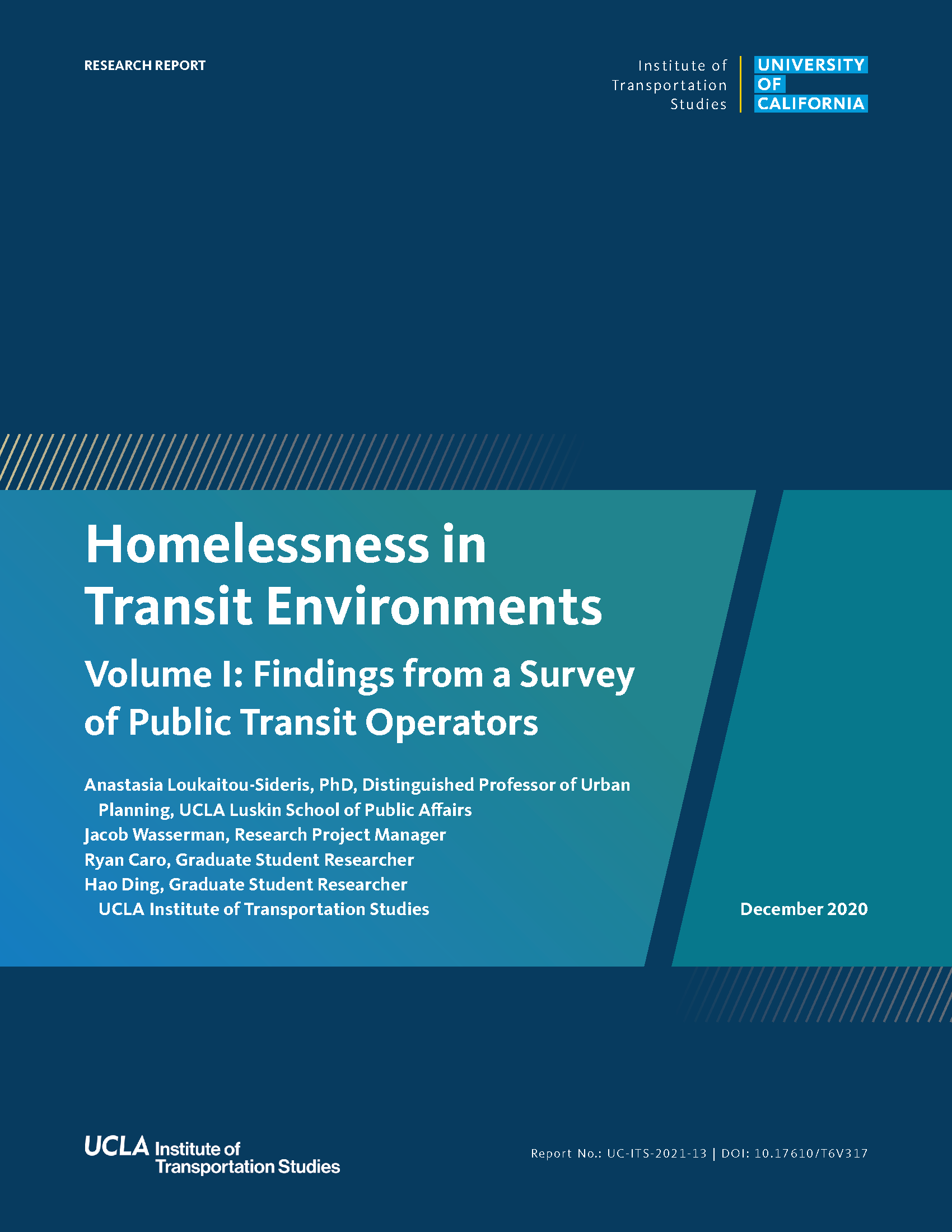Date: December 17, 2020
Author(s): Anastasia Loukaitou-Sideris, Jacob L. Wasserman, Ryan Caro, Hao Ding
Abstract
More than half a million individuals experience homelessness every night in the U.S. With the scale of the crisis often surpassing the capacities of existing safety nets—all the more so since the onset of the COVID-19 pandemic—many turn to transit vehicles, stops, and stations for shelter. Many also use transit to reach destinations such as workplaces, shelters, and community service centers. This report investigates the intersections of the pandemic, transit, and homelessness, presenting the results of a survey of 115 transit operators on issues of homelessness on their systems. We find that homelessness is broadly present across transit systems, though concentrated on larger operators and central hotspots, and has reportedly worsened on transit during the pandemic. The perceived challenges of homelessness are deepening, and data, dedicated funding, and staff are rare. However, a number of responses, including external partnerships and outreach and service provision, are growing, and agencies are adapting quickly to the pandemic. All told, centering the mobility and wellbeing of unhoused riders fits within transit’s social service role and is important to improving outcomes for them and for all riders.
About the Project
More than half a million individuals experience homelessness every night in the U.S. With the scale of the crisis often surpassing the capacities of existing safety nets — all the more so since the onset of the COVID-19 pandemic — many turn to transit vehicles, stops, and stations for shelter. Many also use transit to reach destinations such as workplaces, shelters, and community service centers. This project investigates the intersections of the pandemic, transit, and homelessness; the scale of homelessness on transit; and how transit agencies are responding to the problem. All told, centering the mobility and wellbeing of unhoused riders fits within transit’s social service role and is important to improving outcomes for them and for all riders.


